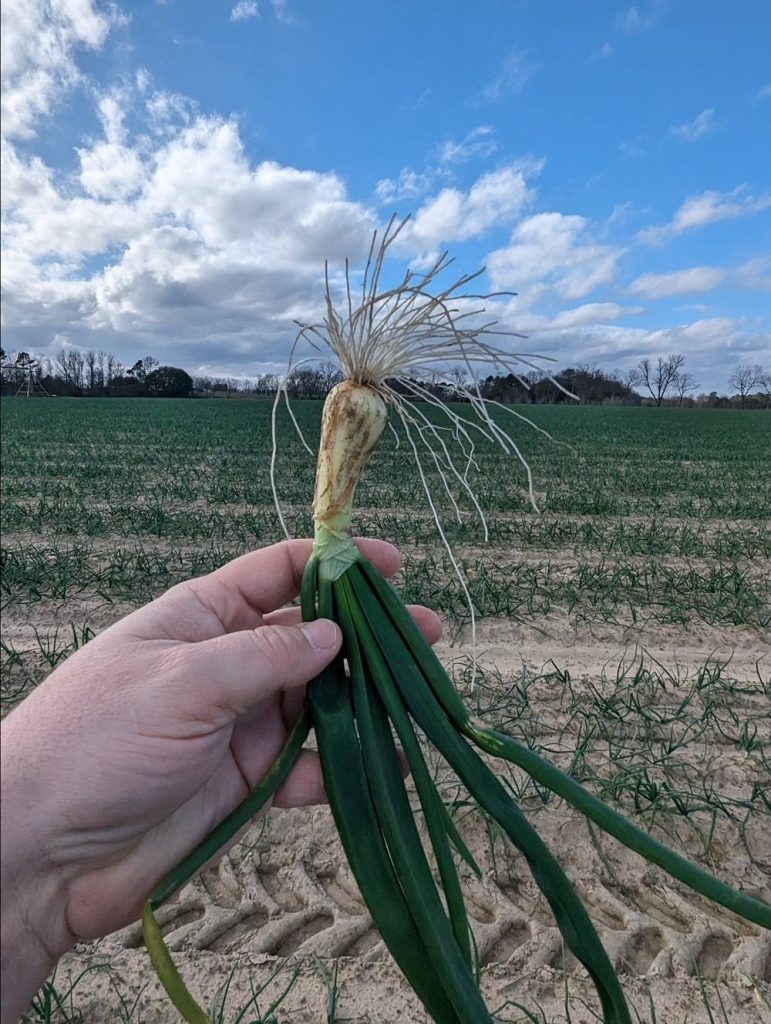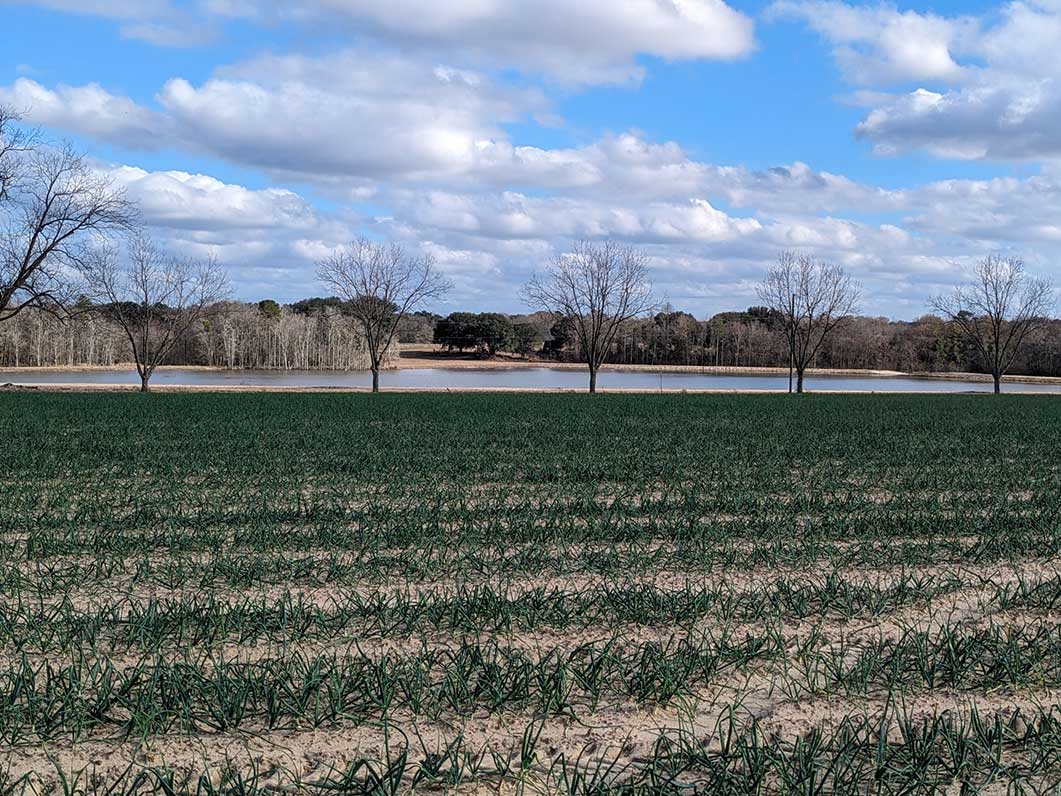
The folks at G&R Farms in Glennville, GA, updated us on the 2024 crop progress in a Feb. 8 release, noting, “We are excited about the prospect of a good market, and it looks like this Vidalia Onion season will be one of the most anticipated crops in many years.”
The release continued, “The 2024 spring season crop is currently growing in our sandy Georgia soils that are perfect for helping grow the consistently mild flavor, sweet flat onions that Vidalia is known for. This year’s winter weather pattern, and the cooler temperatures and wet soils have kept the onion plants from getting too big. Our season is long and we want the plants to grow slowly to have a better shelf life and eating experience. We plant the crop at the end of autumn and the crop grows over the winter, and is harvested in spring.
“During the winter onions need to be establishing a root system and our leaves should be growing, but slowly. We had excellent planting weather and that allowed us to finish the planting season ahead of schedule and get the transplants re-established before the cold start of winter began. We are now seeing relief in the forecast with more moderate temperatures and that allows the onions to grow an extra leaf or two and the root system can continue expanding.
We still have a long way to go before April is here and Mother Nature can throw more curve balls, but we are optimistic. This is especially important considering the El Nino weather pattern that was expected. In fact, we tried to plan ahead by planting in some of our sandiest, most well-drained soils to account for a possible rainy season. Today, I’m excited about the plant stands we have, and the number of leaves we are seeing in our fields without anything too big or too small. Each leaf represents a layer of onion, we want to see a new leaf on each plant every 7-10 days during the winter months. Once springtime hits those leaves will grow double in size providing our yield.”
G&R continued, “We have been able to keep the crop managed and on schedule based on the production plan for each field. This involves a lot of field scouting to track growth and maturity. The two ways to scientifically track the progress are: 1. Heat Units (number of hours above 50 degrees); and 2. The number of leaves the onions have grown at a certain point.
“For example, our earliest fields with the most growth currently have 6-7 leaves, and are looking good. Our last fields have 2-3 small leaves but are rooted really well and are growing rapidly. The reason for the different stages of crop relates to our staggered planting schedule. We plant different varieties at different dates to help us harvest onions longer into the season, keeping our product as fresh as possible while we harvest. The Vidora variety our most popular variety, currently has 4-5 leaves on average, and I know from experience that once the Vidora averages 6 leaves, I need to make sure my irrigation timing is spot on without stressing the crop when it is changing the most. For reference a Jumbo sized onion typically has 8-10 fully grown leaves at harvest. Monitoring the crop so far, I am really pleased with the number of leaves we are seeing, especially knowing that the past several weeks have been cooler than normal. These methods of how we monitor the crop indicate that this season’s progress is right on track. All signs point to the fact that crop sizing still has a lot of potential.”
Every day, we are grateful to hear from Mr. Sweet Onion, aka “Cliff Riner”, and now you can too! Check out this video from our “Cliff Notes” series detailing how the crop is doing during this time of the year. On our seventh episode of “Cliff Notes” our onion expert explains how the crop is looking for the upcoming Vidalia Onion season! 🧅 Leave… | Instagram


